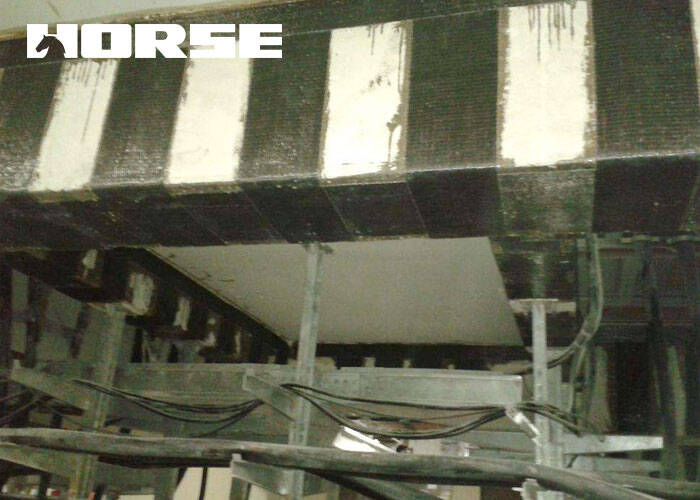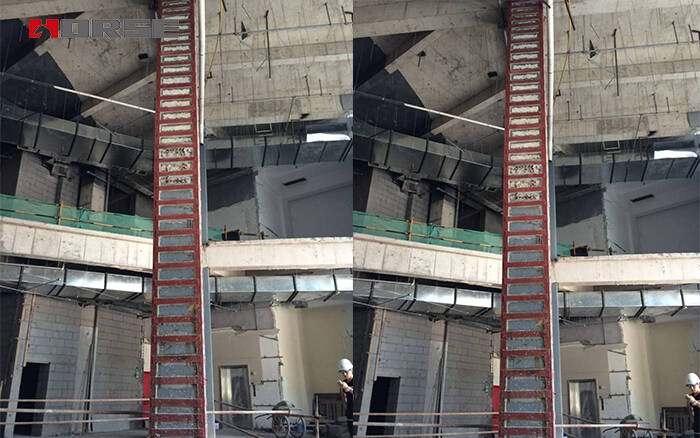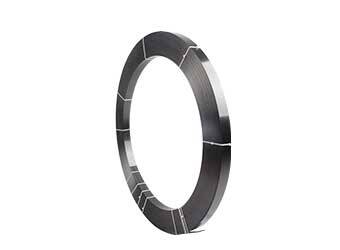Solutions
Horse Construction offers full range of structural strengthening materials with technical supports, documentation supports, products supports, project supports.
Principles And Considerations Of Seismic Reinforcement Design

With the gradual increase in the service life of the house, many owners will find that the quality problems of the house they live in are also increasing. Among them, the decline in earthquake resistance and the substandard load-bearing rating are the most serious problems. If the seismic level of the building does not meet the standard, it is necessary to use appropriate methods to carry out a comprehensive seismic reinforcement of the house, so as to ensure that after the seismic reinforcement construction, the seismic level of the building structure of the house meets the standard. During the seismic reinforcement of houses, there are many tasks that need to be done, including the principles of seismic reinforcement and the considerations of seismic reinforcement design. The following reinforcement house will share with you the content of the seismic reinforcement design of the building.
Principles of seismic reinforcement
1. Temporary reinforcement and permanent reinforcement of the structure
The requirements for temporary reinforcement can be reduced, and the requirements for permanent reinforcement should be higher.
2. Partial reinforcement and overall reinforcement of buildings
Local structural reinforcement can be carried out when the reinforcement of local components does not affect the mechanical performance of the entire structural system. For example, equipment explosion causes local beams and slabs to be damaged. At this time, it is enough to reinforce the damaged beams and slabs to the original resistance. When the building structure as a whole does not meet the requirements, for example, when the structure is deformed laterally under the action of an earthquake, it is advisable to strengthen the building structure as a whole.
3. Construction of reinforcement and reinforcement of component system
There is no doubt that structural reinforcement must be carried out when certain components do not meet the safety requirements, but structural system reinforcement is often overlooked. For example, the changes in stiffness and strength distribution caused by reinforcement of local members should be considered from the safety of the entire structural system. In addition, the reinforcement of the connections between structural members has a great influence on the integrity of the structure.

The seismic reinforcement design should also have the following problems
1. The rigidity and strength distribution of the structure should be evenly distributed during the seismic reinforcement design to avoid the appearance of new weak layers.
2. In the seismic reinforcement design, the vertical force-bearing members should be continuous to ensure a clear force transmission route.
3. In the seismic reinforcement design, the seismic effect will increase due to the change of the structure's natural vibration characteristics after reinforcement.
4. The possibility of reducing the torsion effect of the entire structure should be considered when additional components are added or the original components are strengthened in the seismic reinforcement design.
5. In the seismic reinforcement design, strengthen the seismic structure of weak parts.
6. The design of seismic reinforcement should make the stress state of the structure more reasonable, prevent brittle failure of the members, and eliminate the stress state of strong beams, weak columns, and weak nodes of strong members that are not conducive to earthquake resistance.
7. The impact of the construction site should be considered in the design of seismic reinforcement. According to the specific conditions of the building site, the reinforced structure should select a structural system with less ground response to avoid the increase in seismic action after reinforcement exceeding the increase in the seismic capacity of the structure. . This is because, according to the earthquake damage experience and the basic theories of seismic analysis, the seismic response of a structure with greater stiffness on a hard site is greater, and a structure with less stiffness and greater flexibility on a soft site has greater seismic response. Therefore, this concept should be used in the seismic reinforcement design to change the seismic action of the structure by adjusting the stiffness of the structure to meet the design requirements.
8. The seismic reinforcement design adopts new seismic technology for reinforcement. The use of more mature new technologies for seismic reinforcement can improve the seismic performance of the structure as a whole, and it should be strongly advocated. The United States and Japan have done a lot of work in this area, and there are also some domestic projects that are exploring this area. In this regard, the currently applicable technologies and measures include: basic seismic isolation (including layer isolation), additional seismic energy dissipation supports or seismic energy dissipation shear walls, and the use of active control or hybrid control technology.
You can find anything here you are in need of, have a trust trying on these products, you will find the big difference after that.

High strength, unidirectional carbon fiber wrap pre-saturated to form a carbon fiber reinforced polymer (CFRP) wrap used to strengthen structural concrete elements.

Prestressed carbon fiber reinforced polymer(CFRP) plate for slab, beam strengthening to increase stiffness, reduce distortion and deflection of members, reduce the cracks, avoid and stop cracking.

High strength carbon fiber reinforced polymer(CFRP) plate for structural strengthening and concrete repair